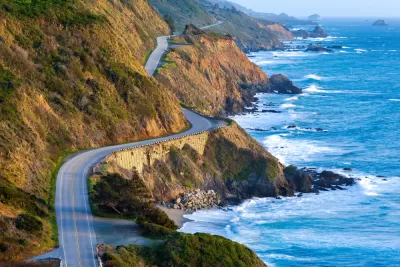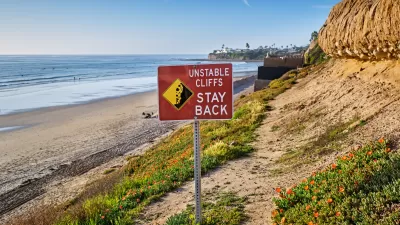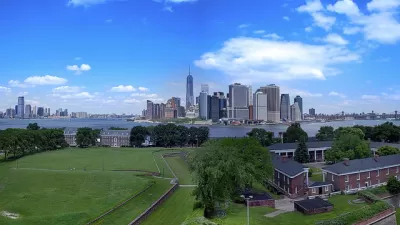California is working on a plan to adapt infrastructure statewide to the future impacts of climate change.

Amid a number of new policies in California putting climate adaptation at the front and center, the state is also pursuing an update of the Safeguarding California Action Plan—a comprehensive collection of strategies to mitigate the risks that climate impacts like sea-level rise, drought, flooding, and tree die-off pose to California’s water supply, energy grid, agriculture, and urban infrastructure.
The chair of the state Natural Resources Agency, John Laird, spoke to The Planning Report to delve deeper into this complex assortment of variables.
Among the strategies the agency is exploring is the creation of a regional energy grid, which could help stabilize the supply of renewable energy by allowing Western states to share the resources local to them.
Laird also supports the governor’s contentious plan to build a tunnel system in the Bay Delta. For him, resilience is the lynchpin that can unite the area's embroiled interests under one plan.
I sometimes say that dealing with the issues in the Delta is bit like dealing with peace in the Middle East: People have their basic beliefs, and they don’t cross over. But the issue of resiliency could provide a way to talk about it that everyone can understand.
Some of Laird's expertise is tied to his own brushes with disaster. In 2011, he was chairing a meeting of the state’s Ocean Protection Council when the Tōhoku tsunami hit the California coast. And in 1989, he was a city councilmember when the Loma Prieta earthquake destroyed Downtown Santa Cruz.
That hard-won experience has convinced him that the public can, and must, understand how a complex global process like climate change can quickly become close to home.
"There are variables to this," he says. "I think it’s important to develop the science, bring it home to the public, and use examples that people have experienced—like the tsunami—to make sure that people understand the urgency."
FULL STORY: Safeguarding California: CA’s Natural Resources Secretary on Resiliency & Climate Change Plans

Alabama: Trump Terminates Settlements for Black Communities Harmed By Raw Sewage
Trump deemed the landmark civil rights agreement “illegal DEI and environmental justice policy.”

Planetizen Federal Action Tracker
A weekly monitor of how Trump’s orders and actions are impacting planners and planning in America.

The 120 Year Old Tiny Home Villages That Sheltered San Francisco’s Earthquake Refugees
More than a century ago, San Francisco mobilized to house thousands of residents displaced by the 1906 earthquake. Could their strategy offer a model for the present?

In Both Crashes and Crime, Public Transportation is Far Safer than Driving
Contrary to popular assumptions, public transportation has far lower crash and crime rates than automobile travel. For safer communities, improve and encourage transit travel.

Report: Zoning Reforms Should Complement Nashville’s Ambitious Transit Plan
Without reform, restrictive zoning codes will limit the impact of the city’s planned transit expansion and could exclude some of the residents who depend on transit the most.

Judge Orders Release of Frozen IRA, IIJA Funding
The decision is a victory for environmental groups who charged that freezing funds for critical infrastructure and disaster response programs caused “real and irreparable harm” to communities.
Urban Design for Planners 1: Software Tools
This six-course series explores essential urban design concepts using open source software and equips planners with the tools they need to participate fully in the urban design process.
Planning for Universal Design
Learn the tools for implementing Universal Design in planning regulations.
Clanton & Associates, Inc.
Jessamine County Fiscal Court
Institute for Housing and Urban Development Studies (IHS)
City of Grandview
Harvard GSD Executive Education
Toledo-Lucas County Plan Commissions
Salt Lake City
NYU Wagner Graduate School of Public Service





























